Year 8 Written Methods Worksheets
Addition of 4 and 5-digit Numbers
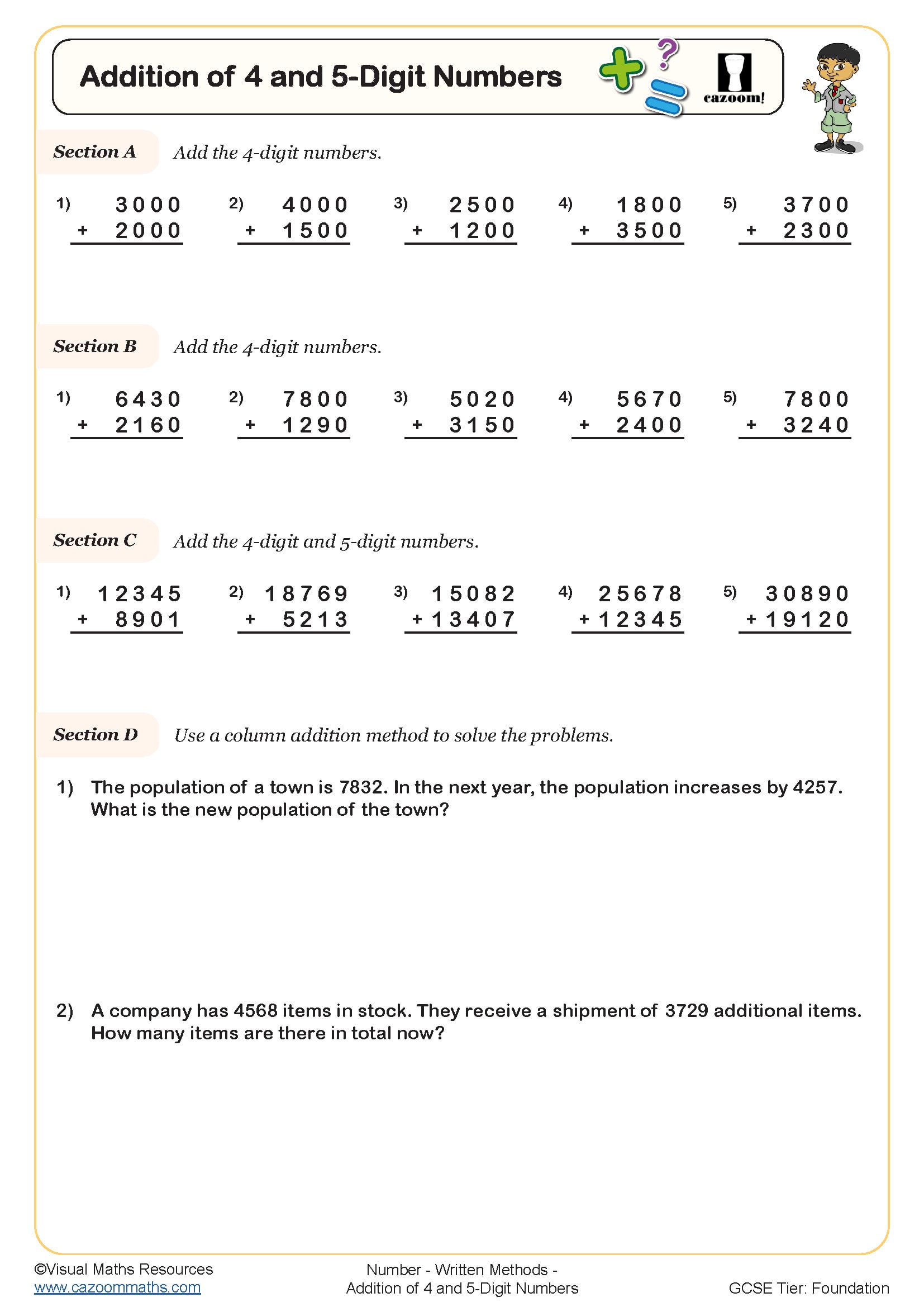
Column Addition - Decimals (A)
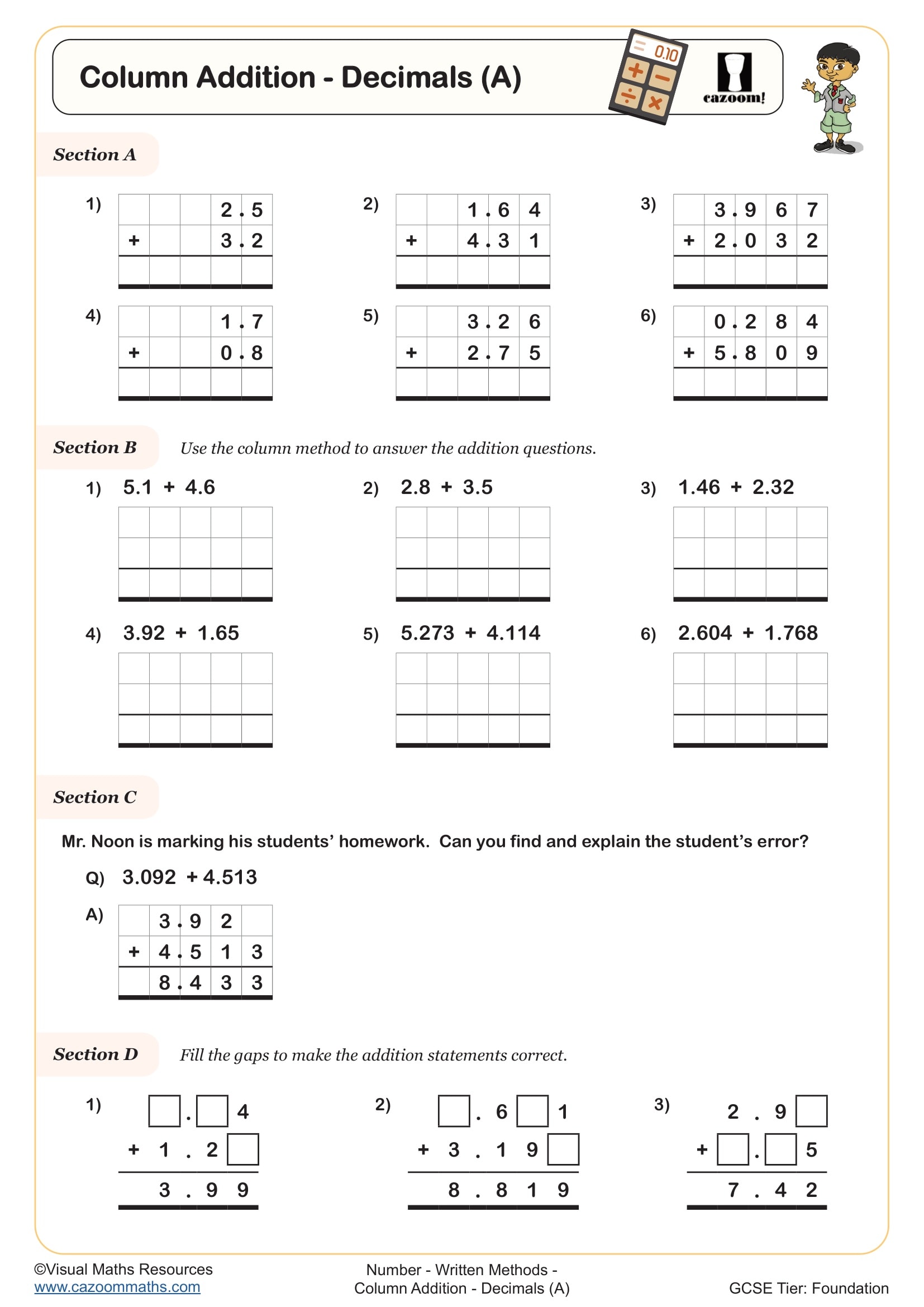
Column Addition - Decimals (B)
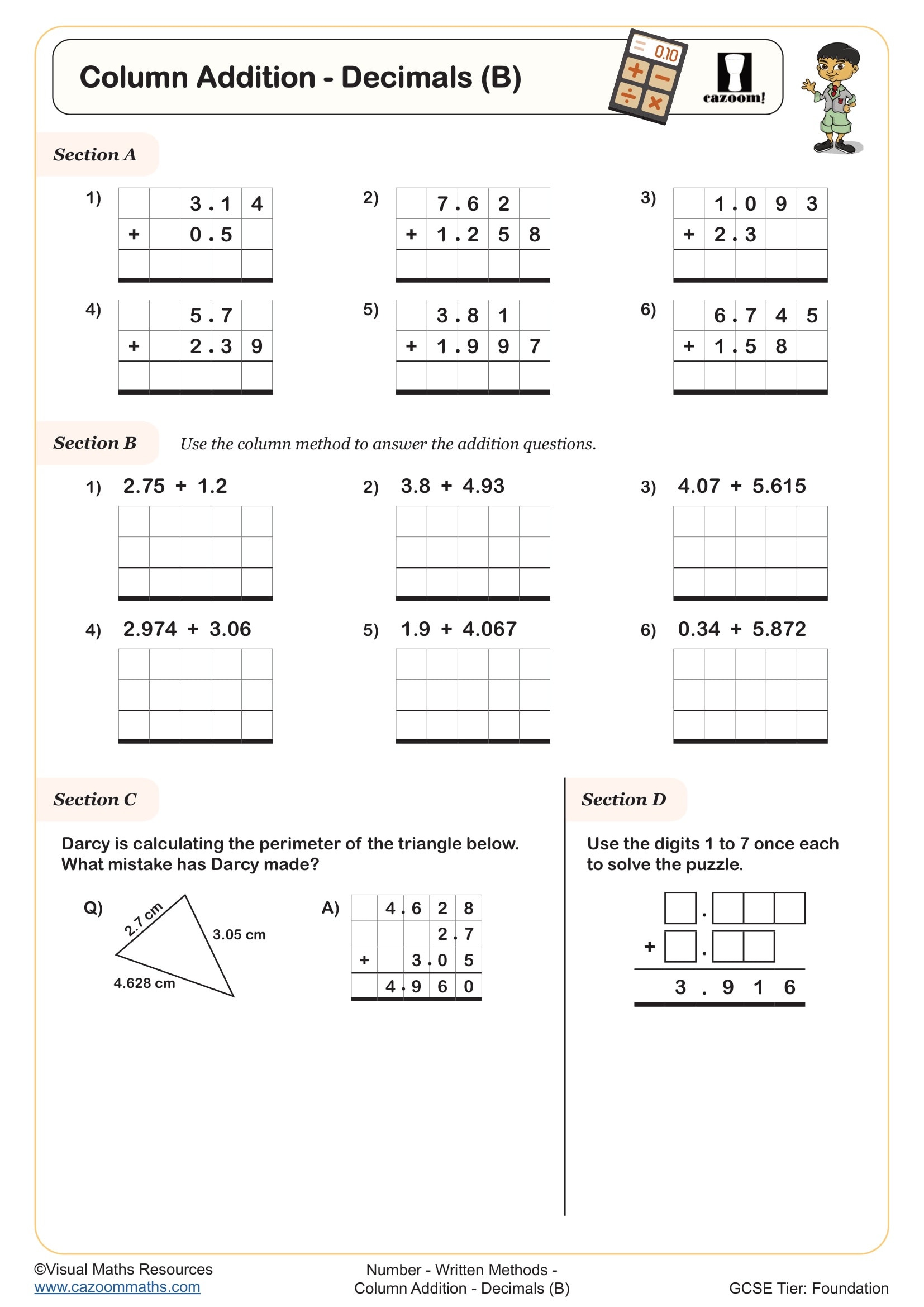
Four Operations Word Problems (A)
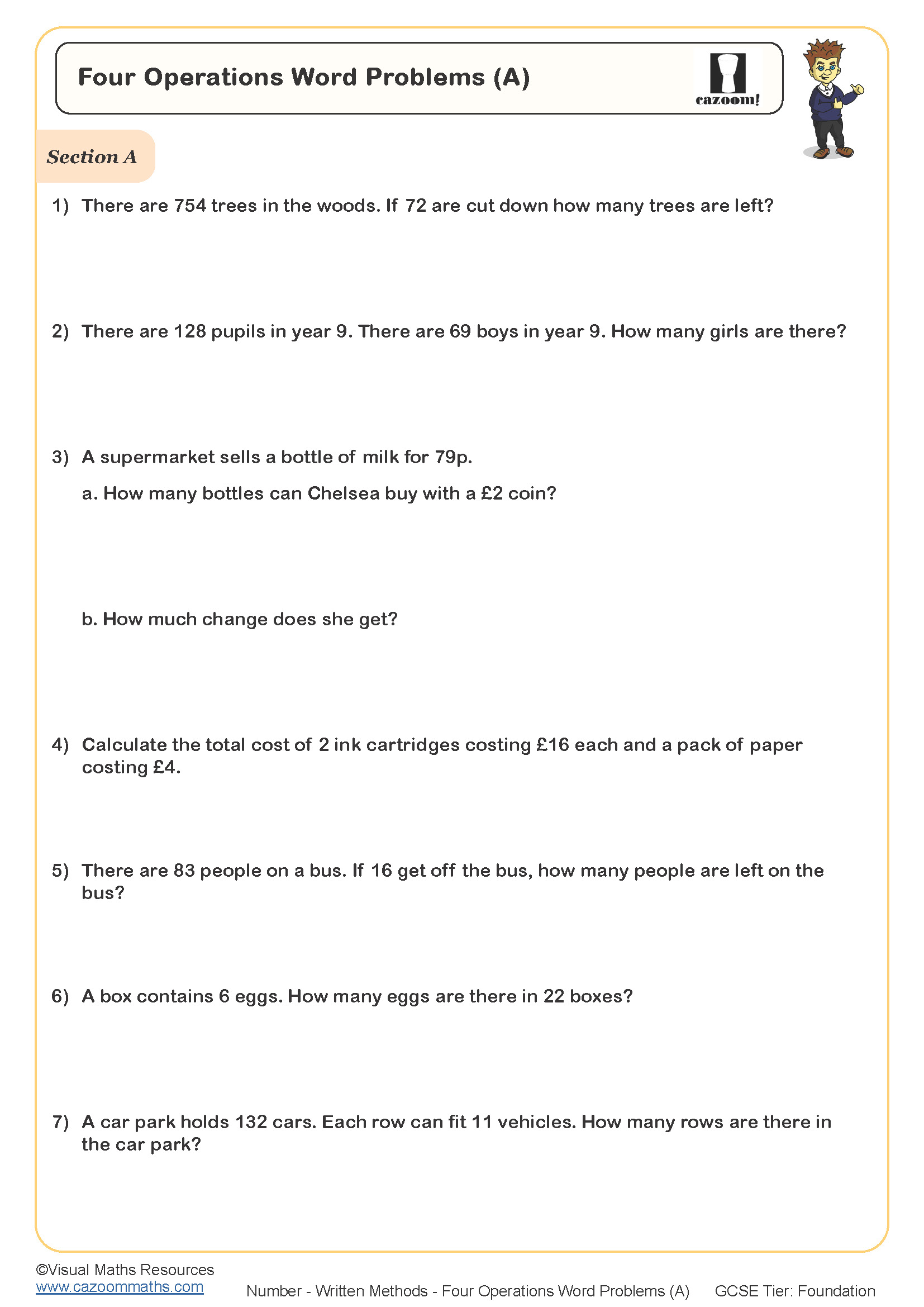
Four Operations Word Problems (A) (With Clues)
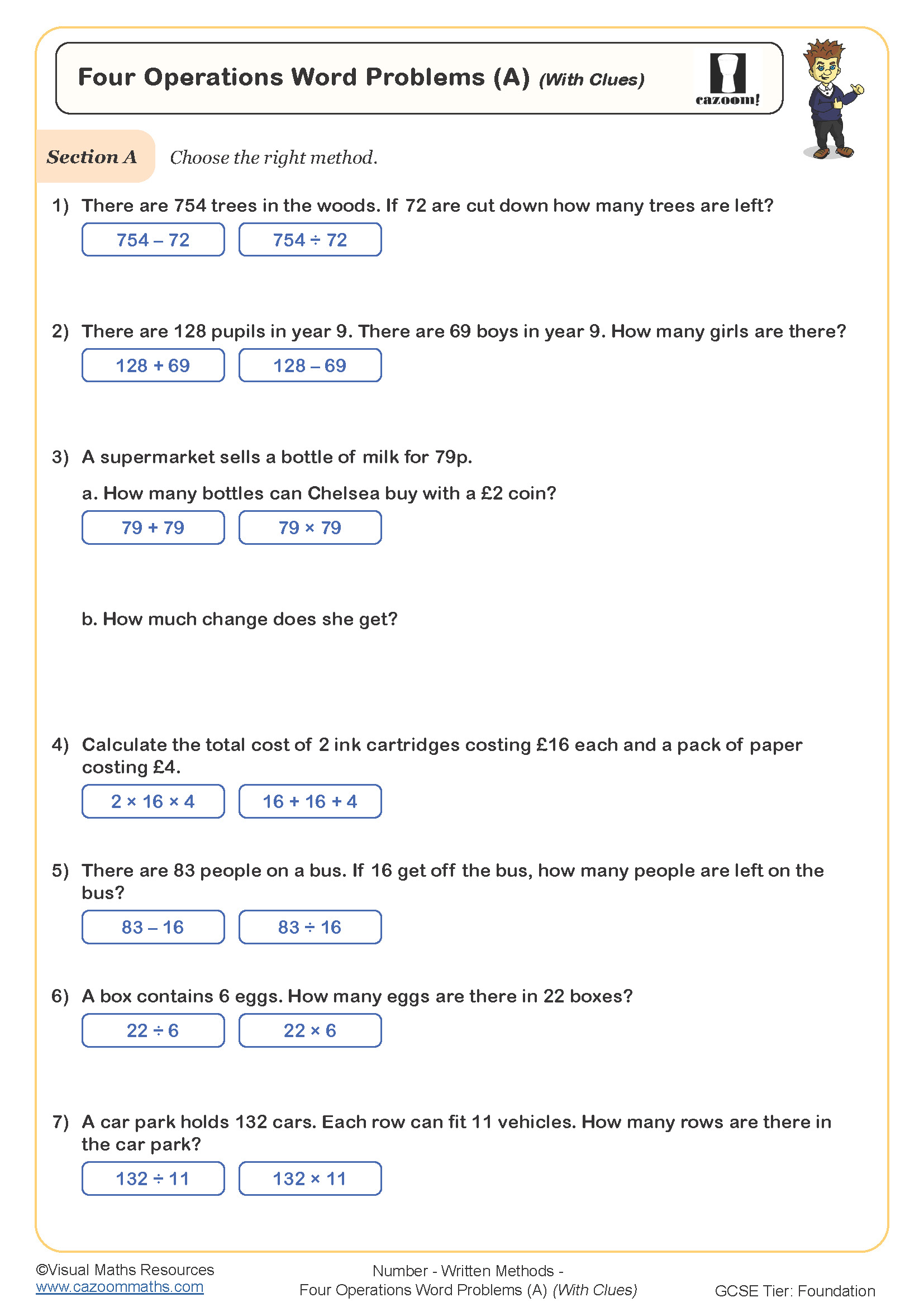
Four Operations Word Problems (B)
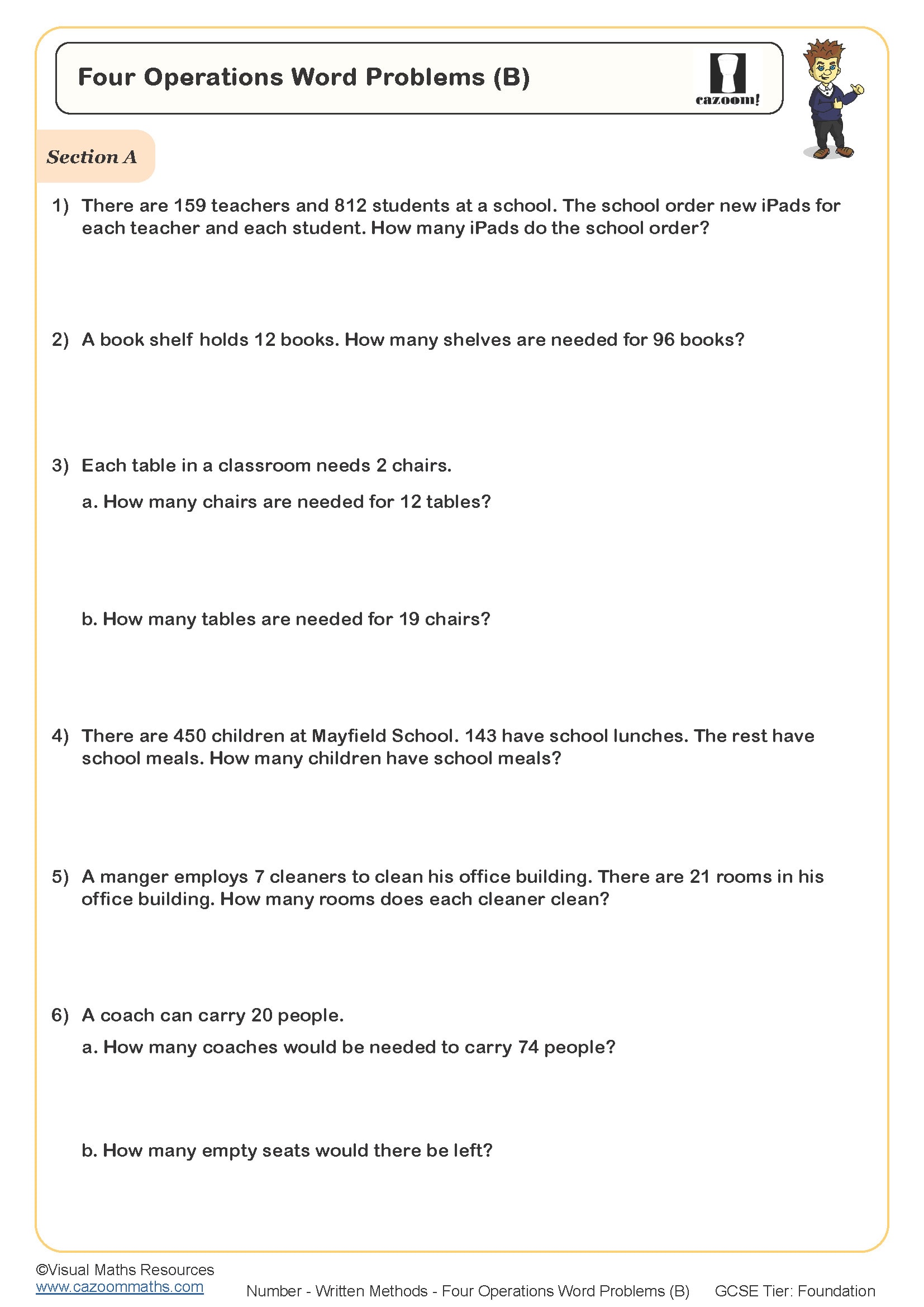
Four Operations Word Problems (B) (With Clues)
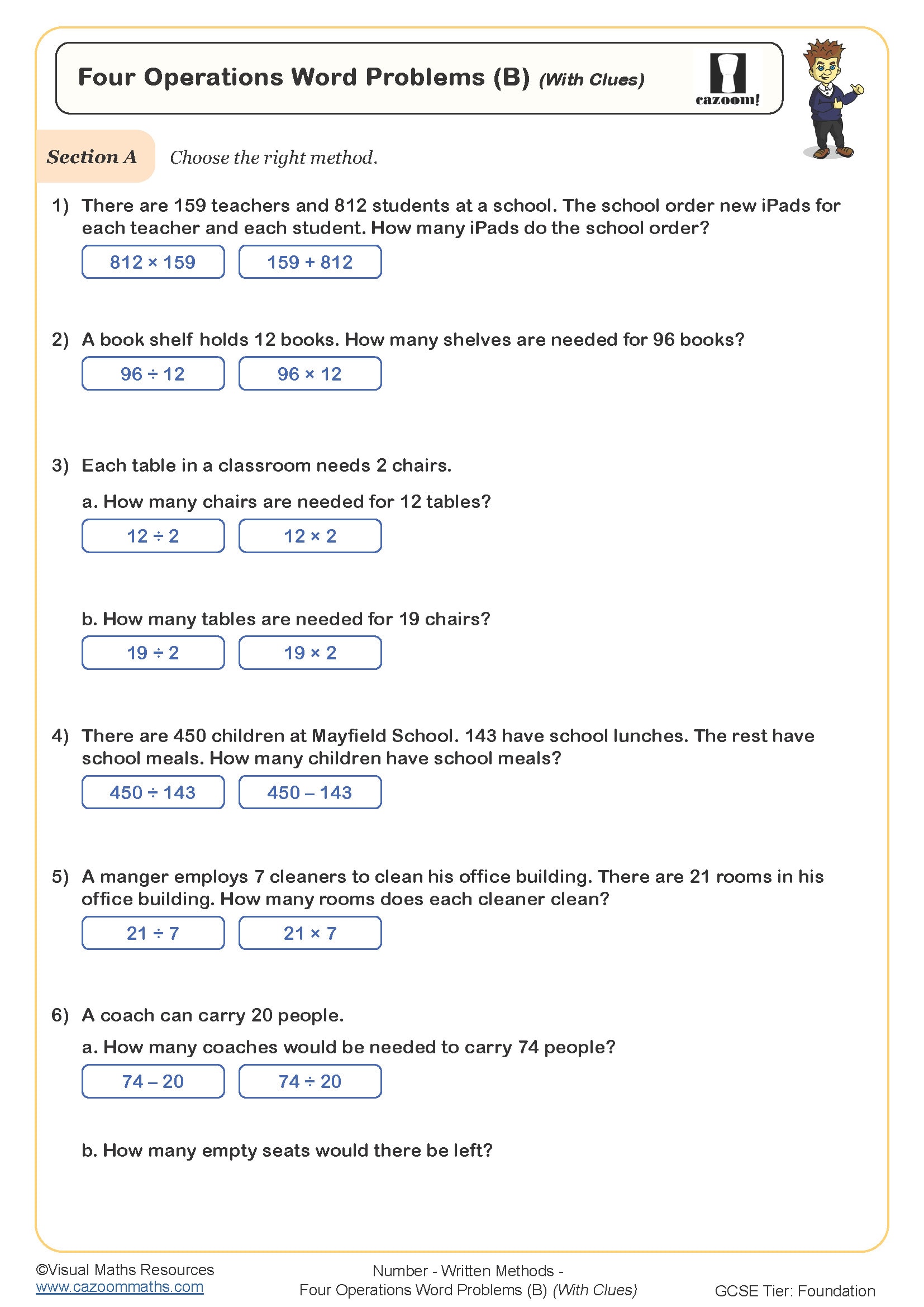
Four Operations Word Problems (C)
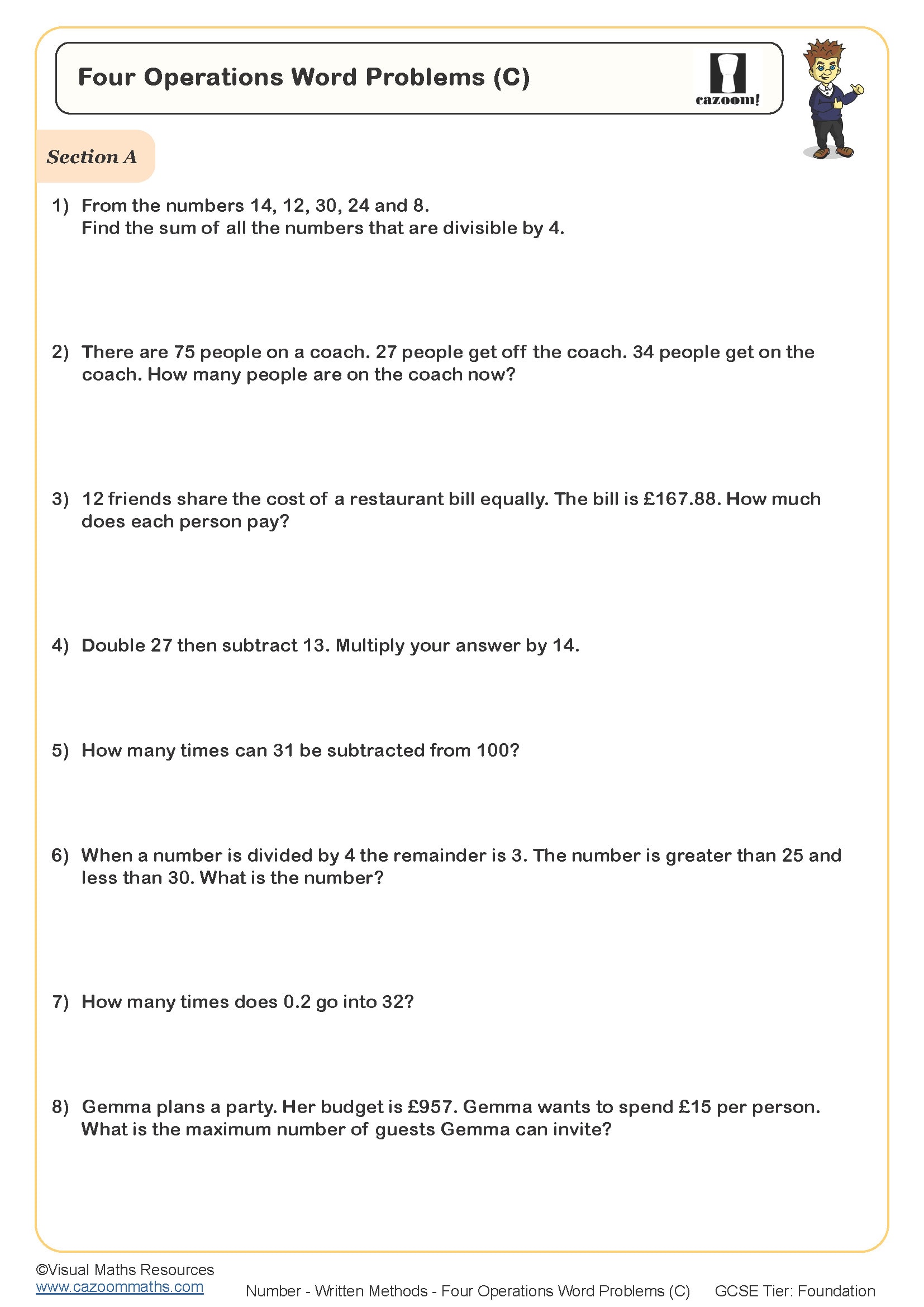
Long and Short Division (A)
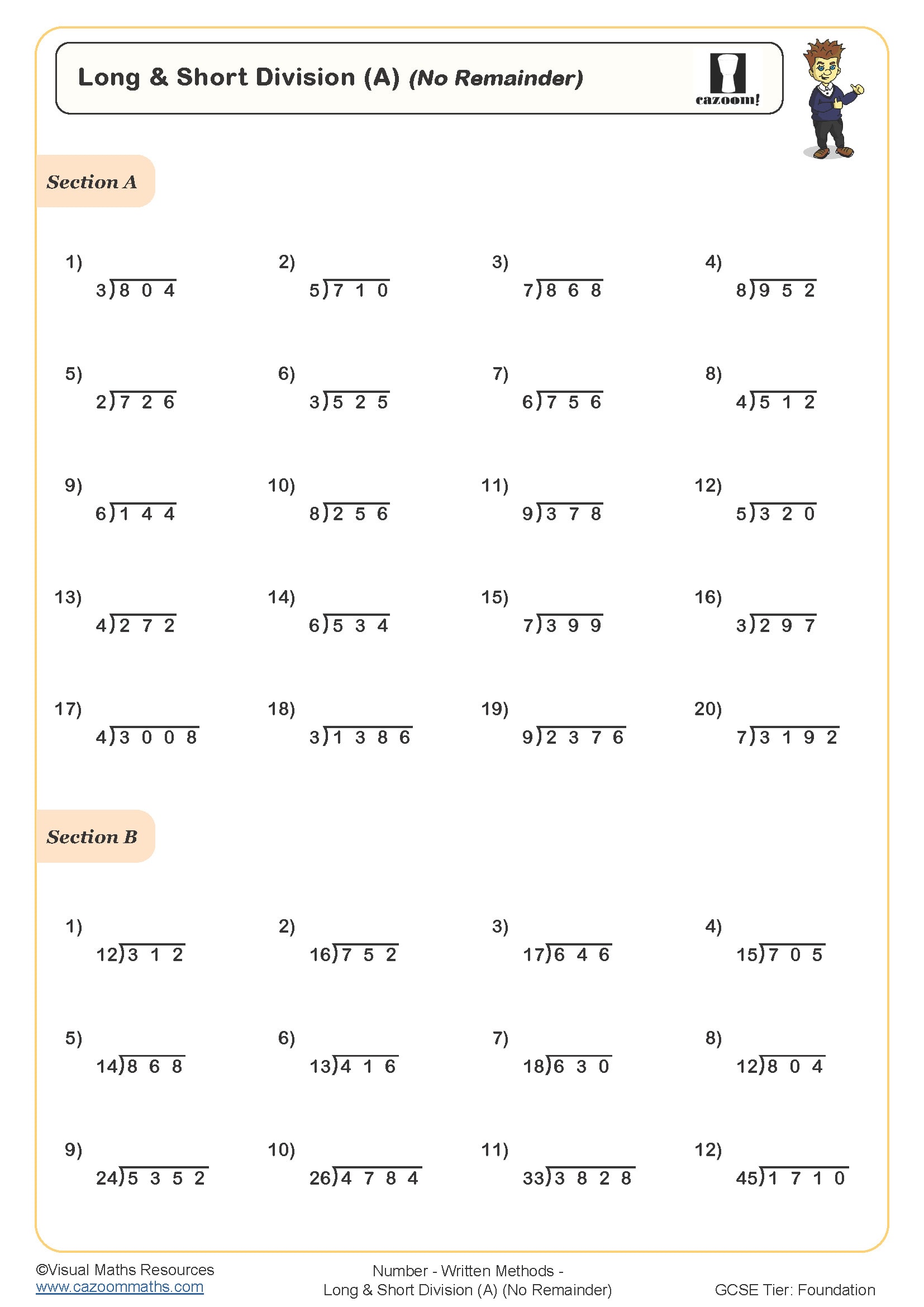
Long and Short Division (B)
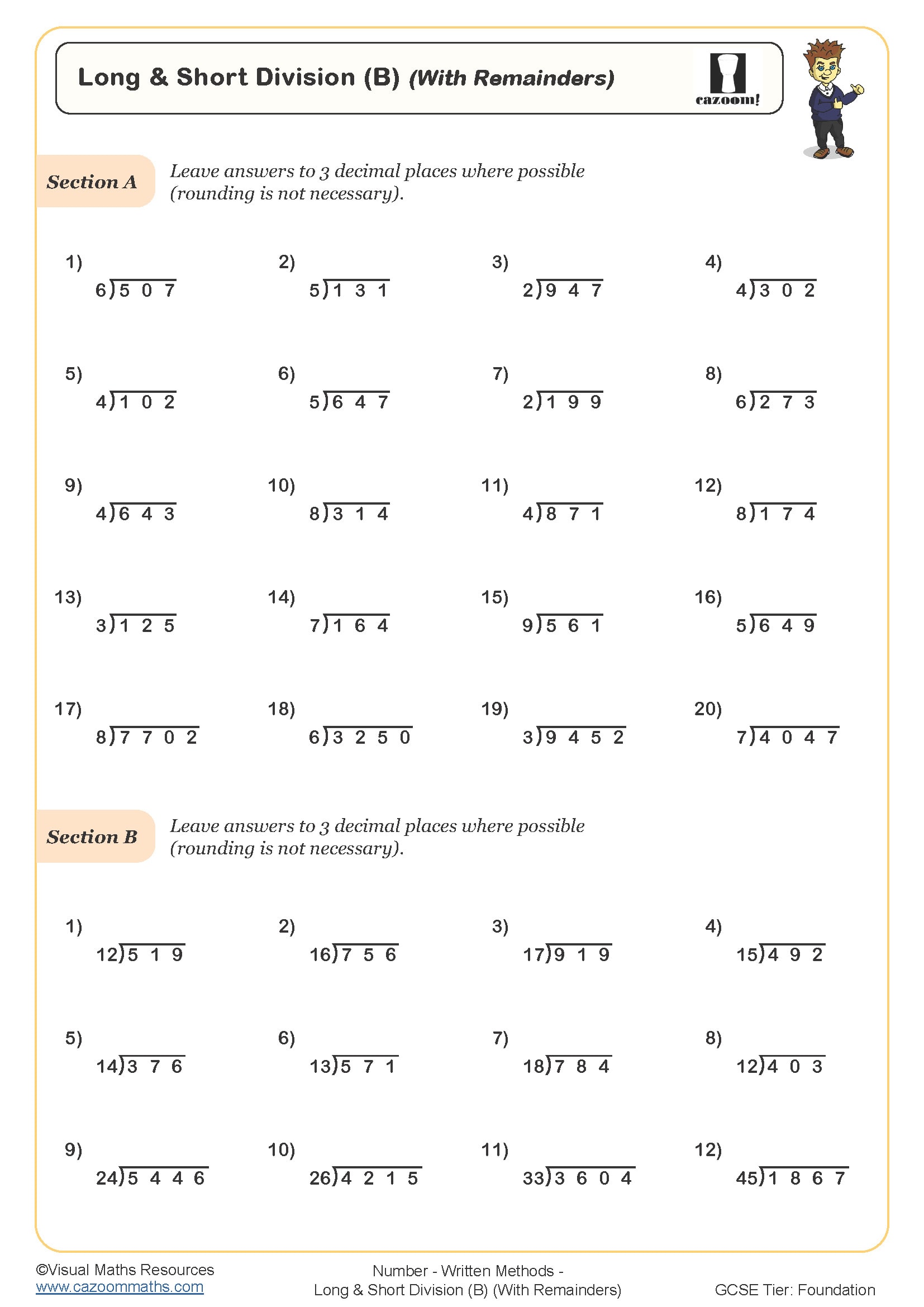
Money Problems (A)
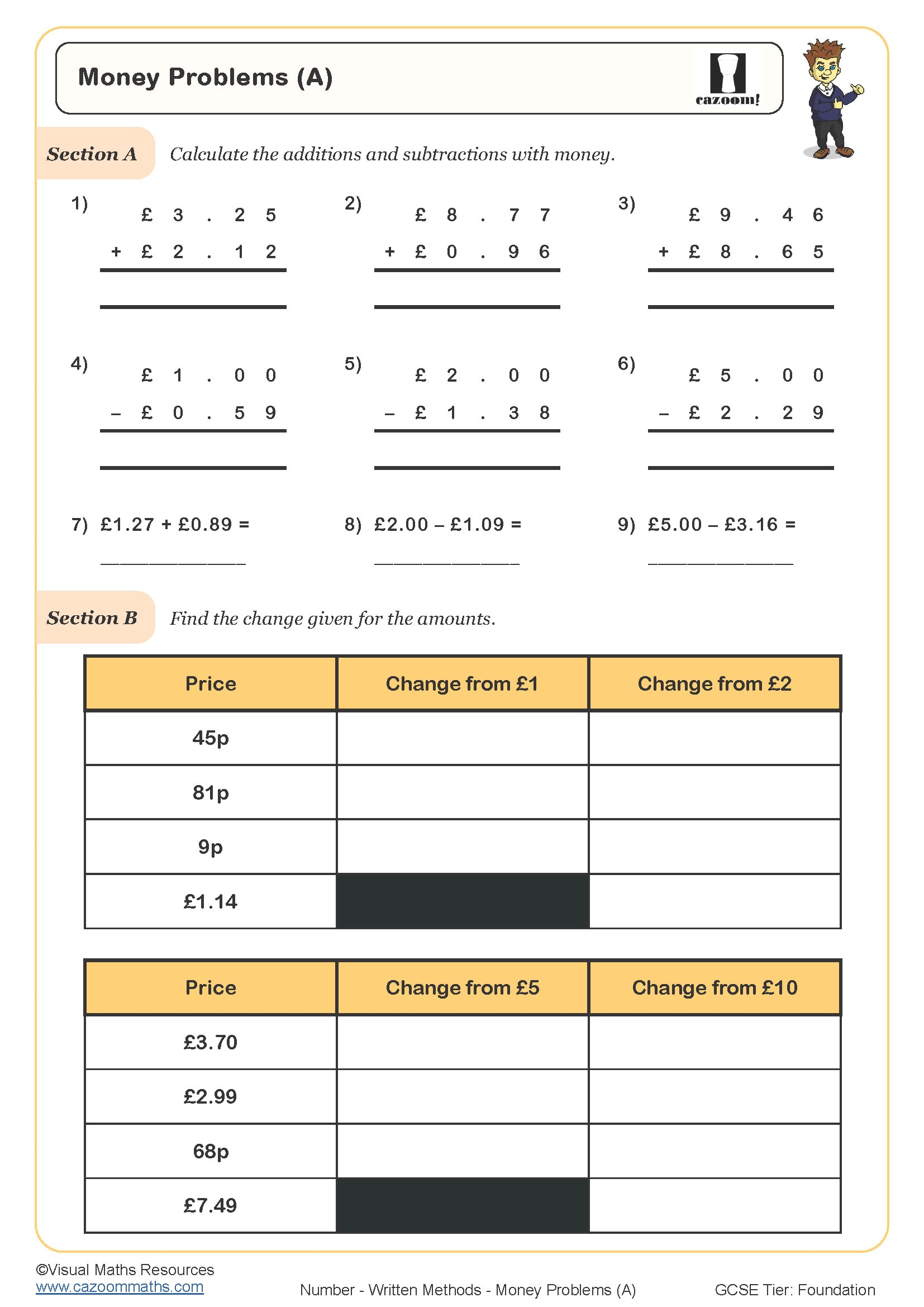
Money Problems (B)
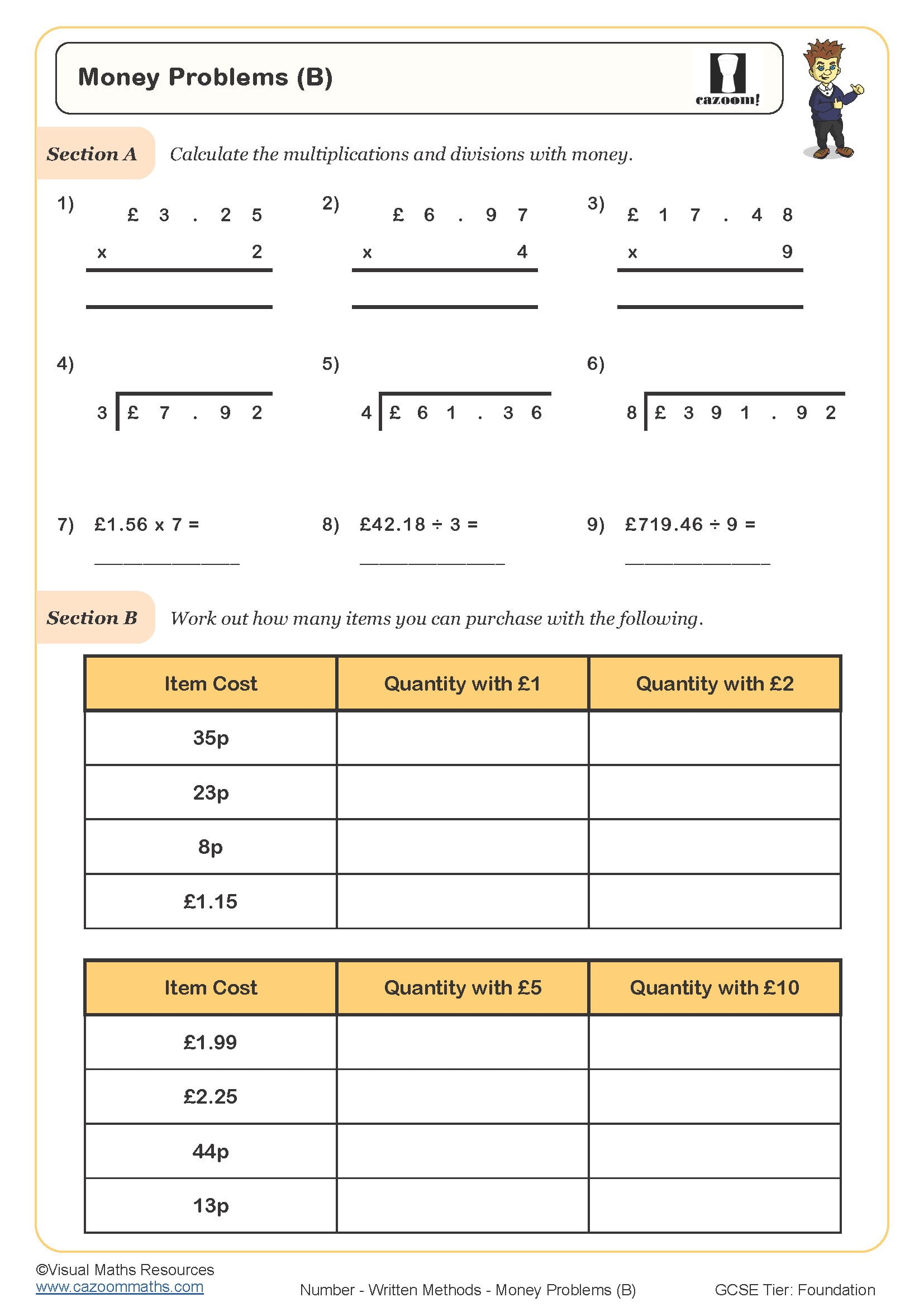
Practising the Column Method for Long Multiplication (A)
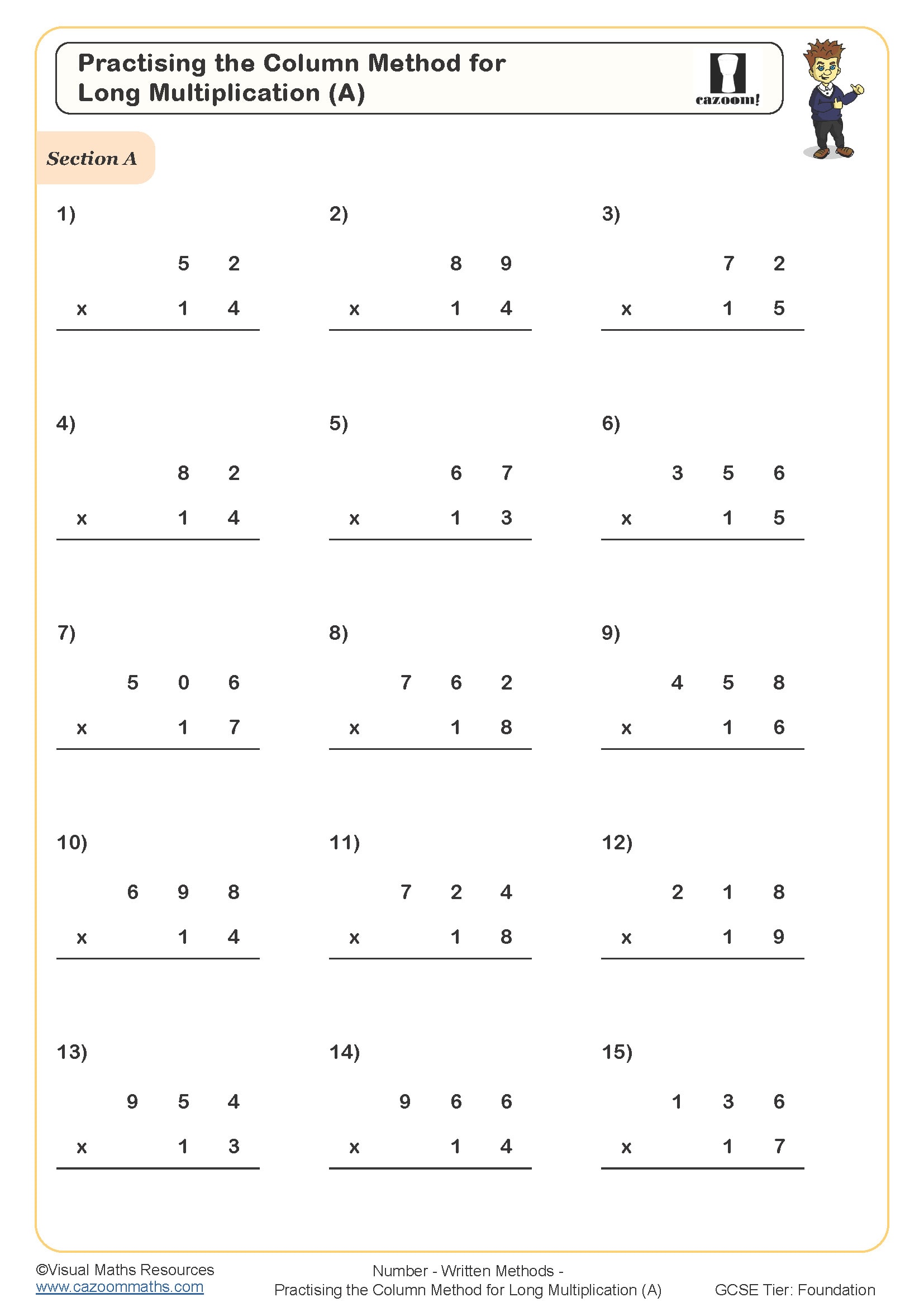
Practising the Column Method for Short Multiplication
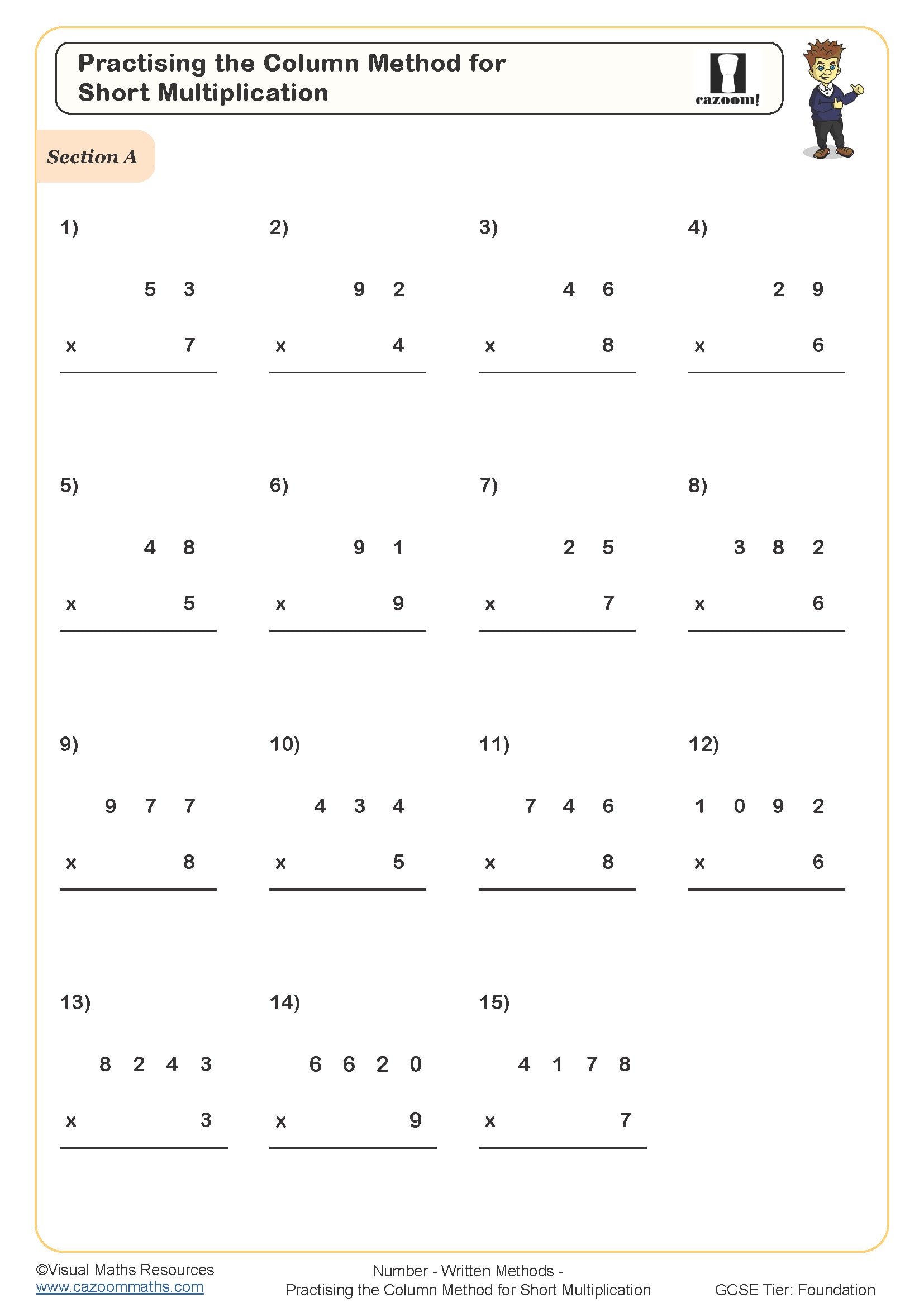
Practising the Grid Method for Long Multiplication
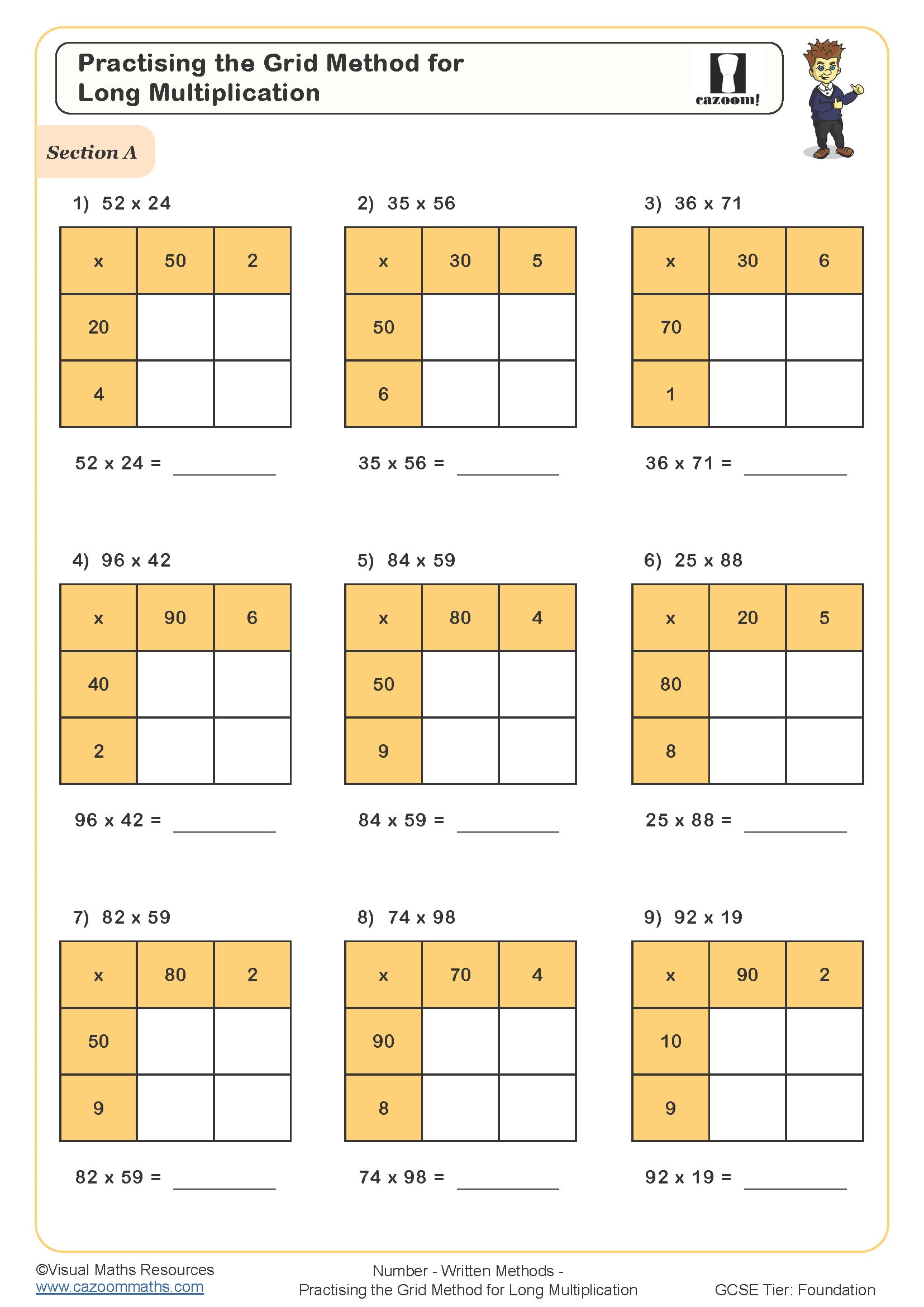
Practising the Grid Method for Short Multiplication (A)
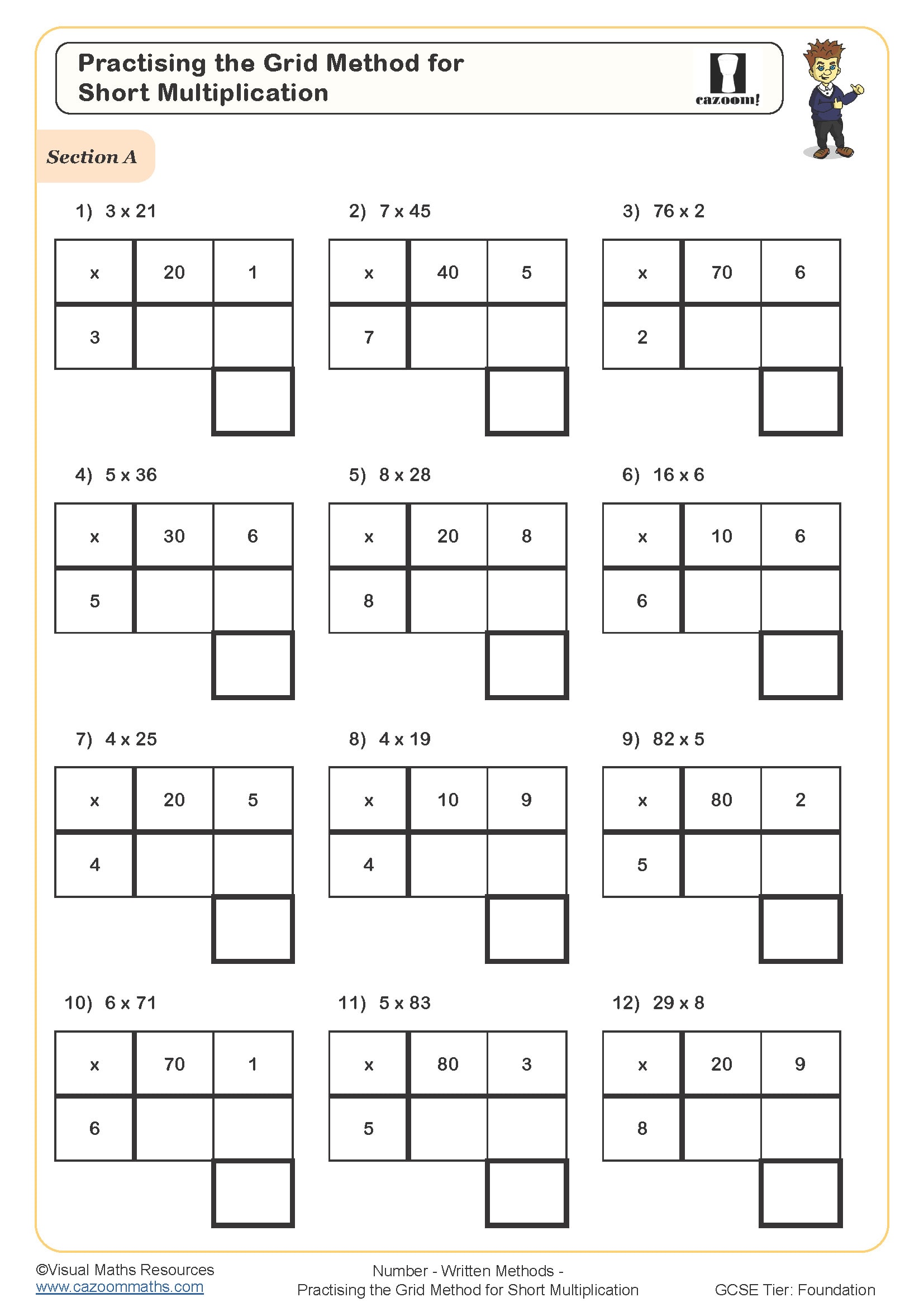
Short Division (A) Dividing 2 Digit Numbers
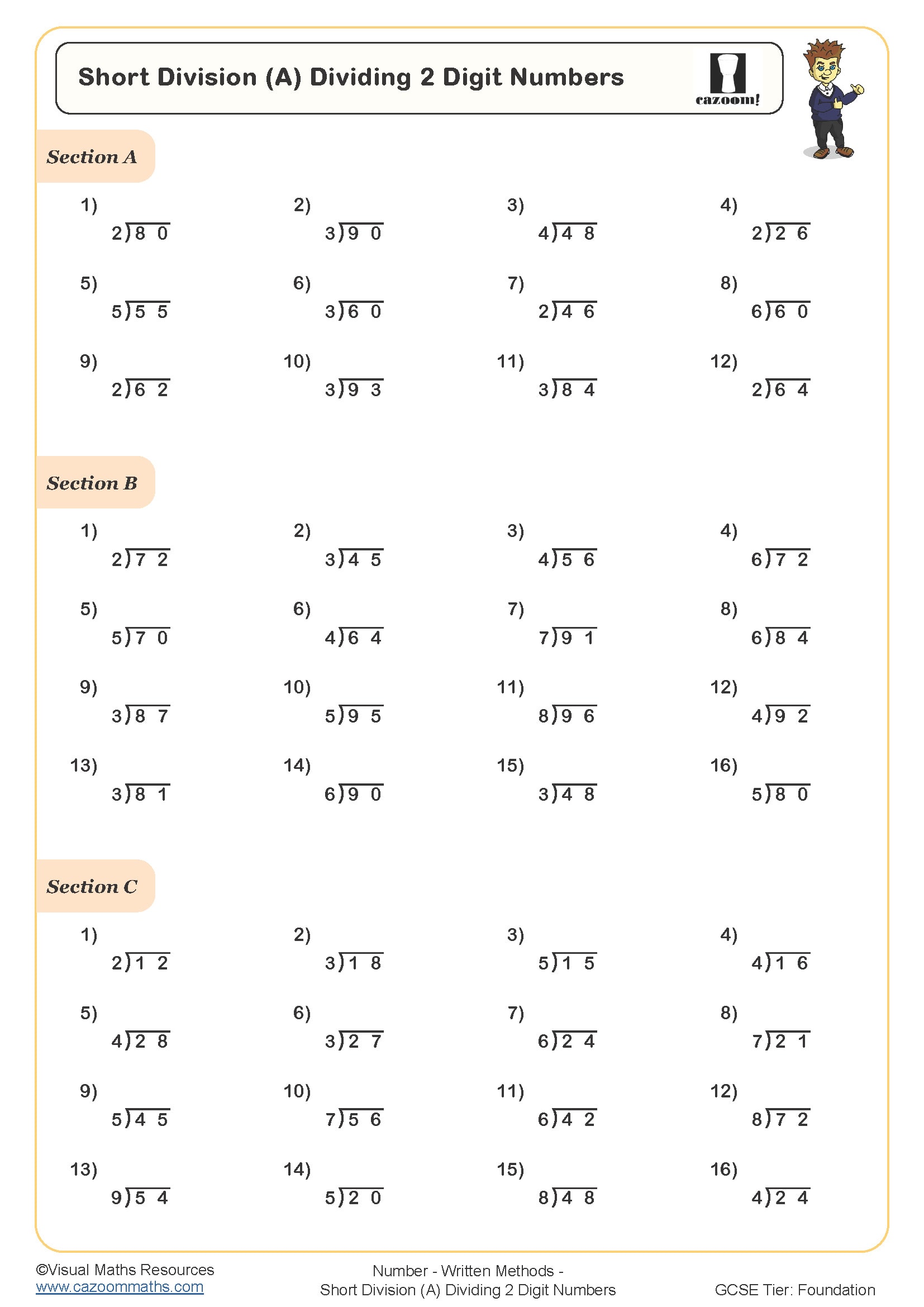
Short Division (B) Dividing 3 Digit Numbers
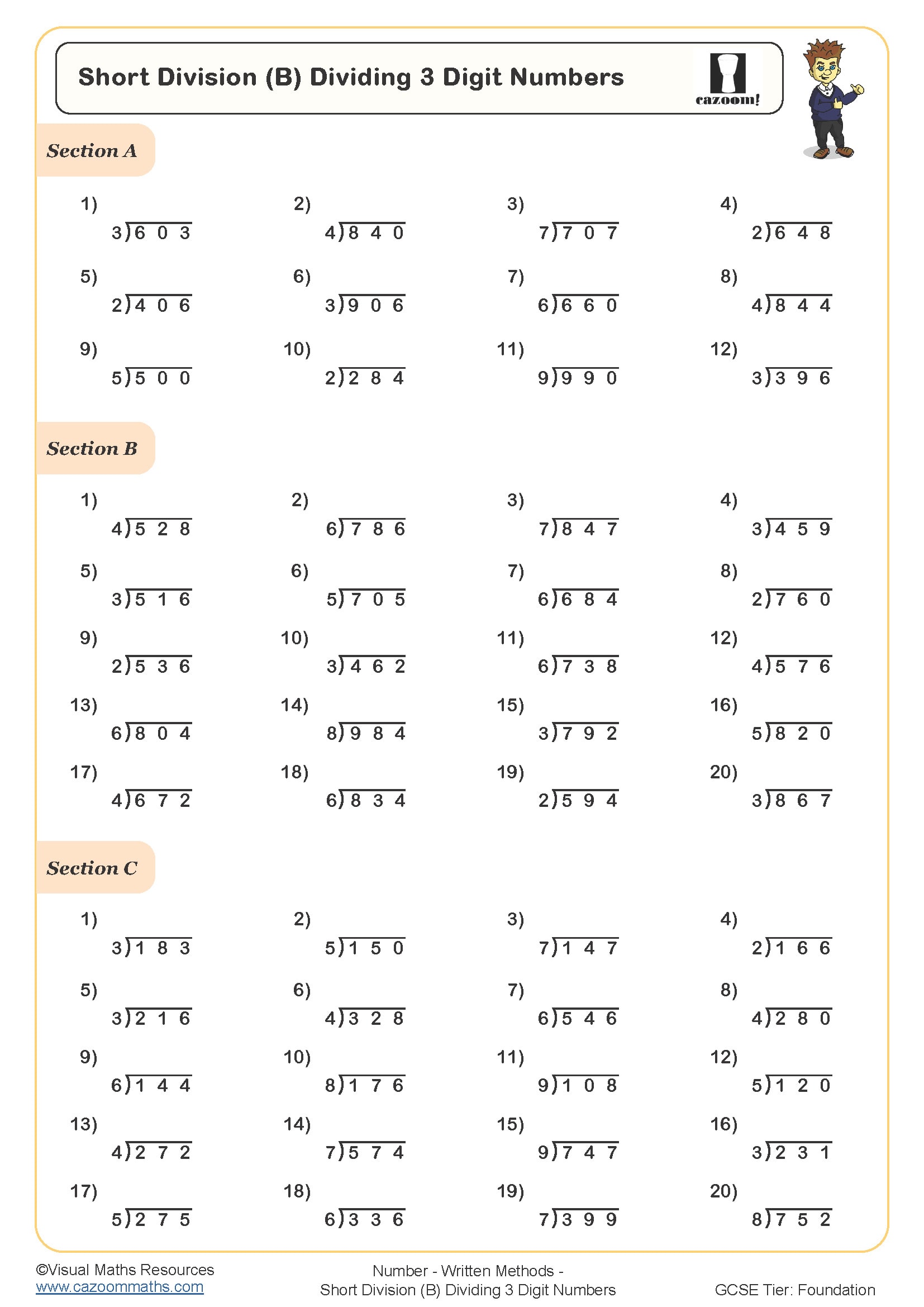
Short Division (C) Dividing 2, 3 and 4 Digit Numbers
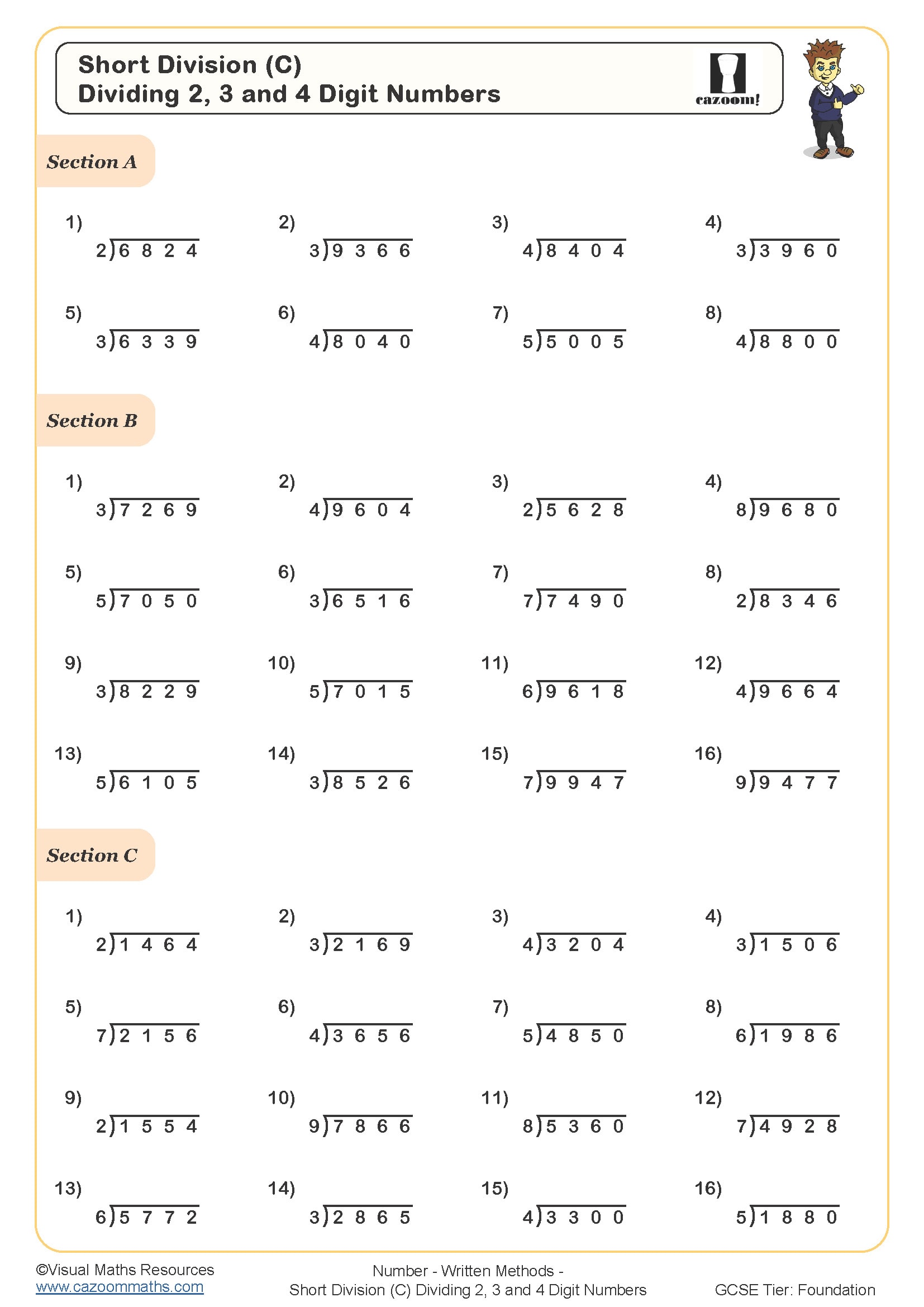
Short Division (D) Dividing 4 Digit Numbers
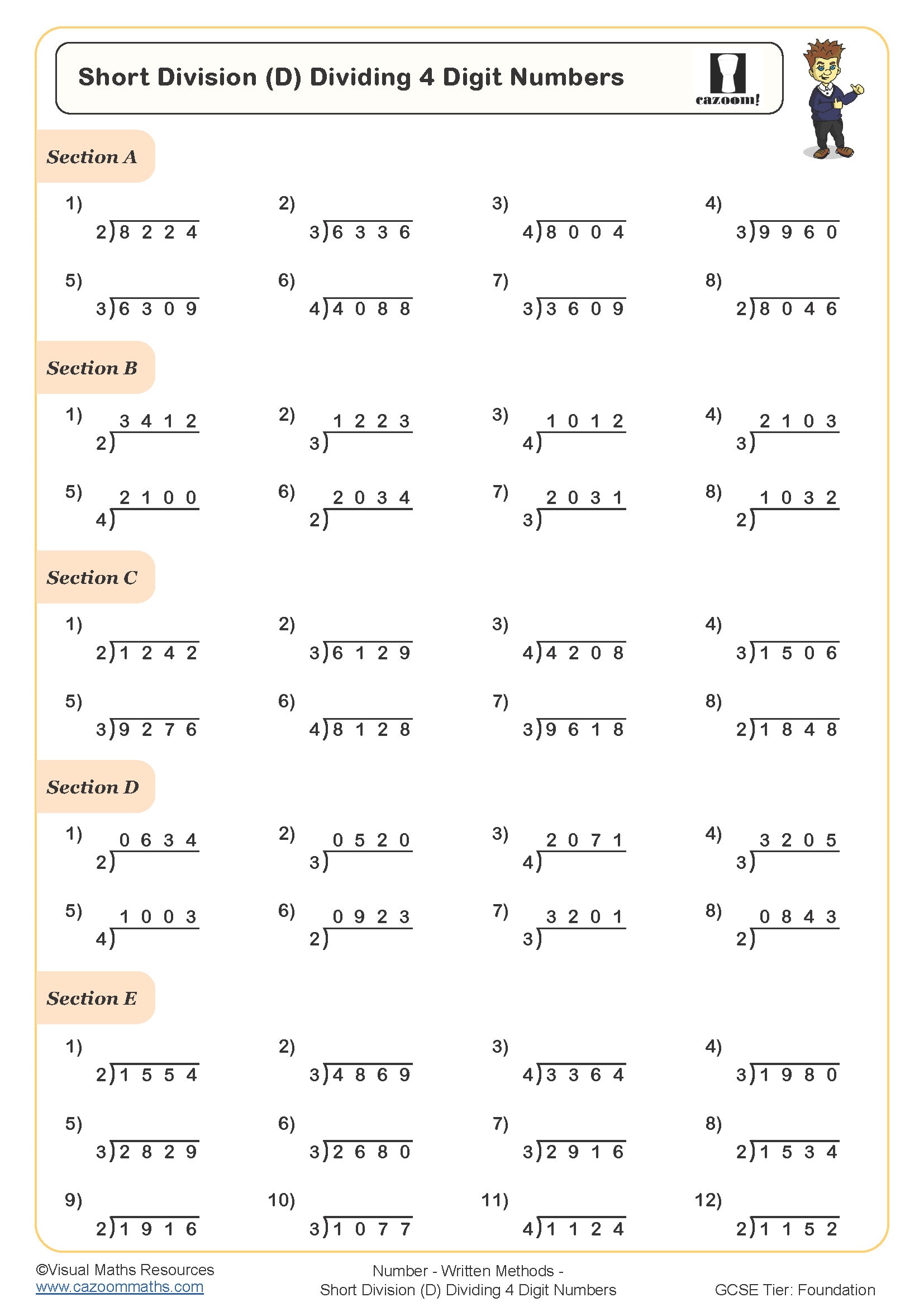
Subtraction of 4 and 5-digit Numbers
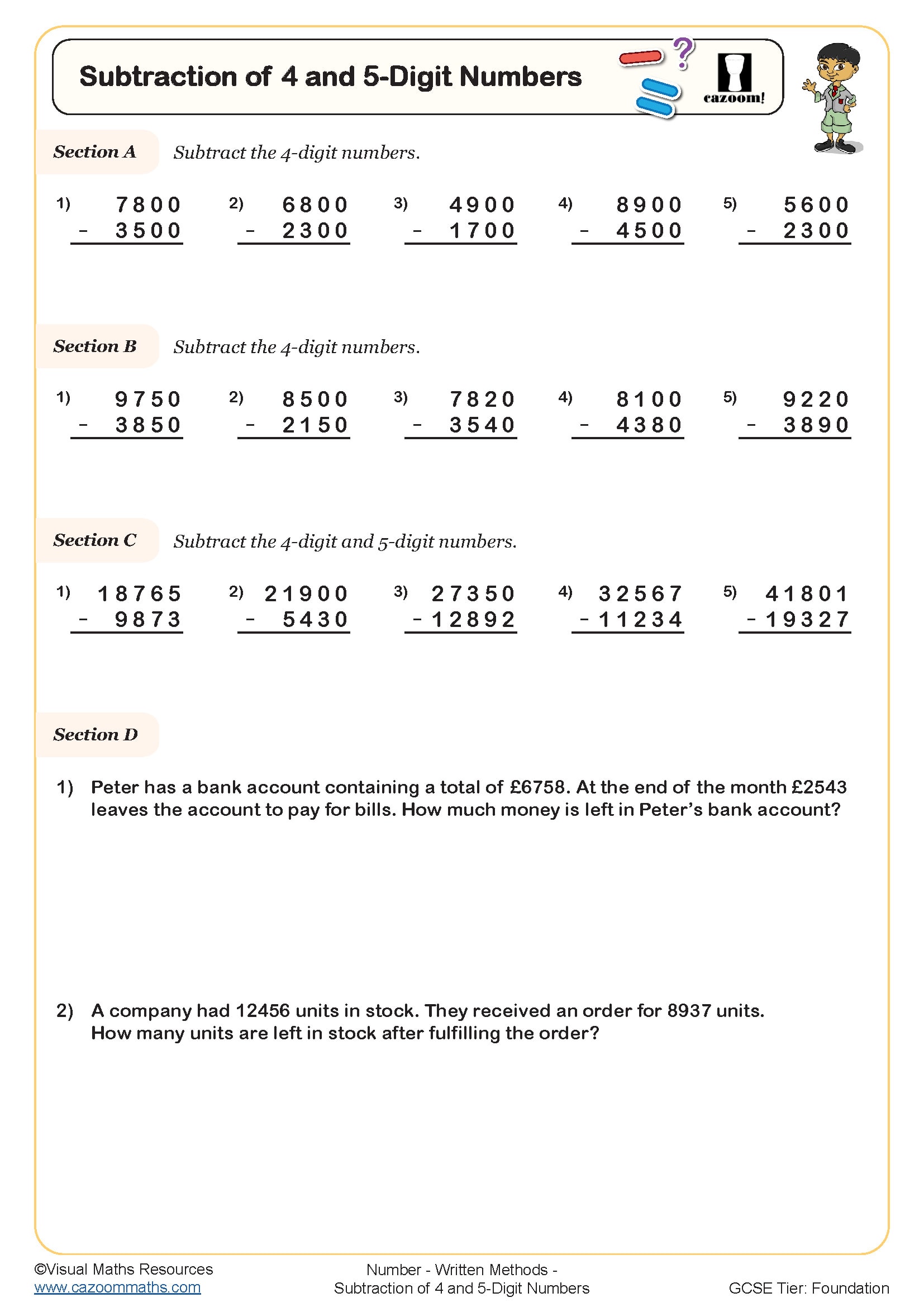
Use Formal Methods For Addition of Integers
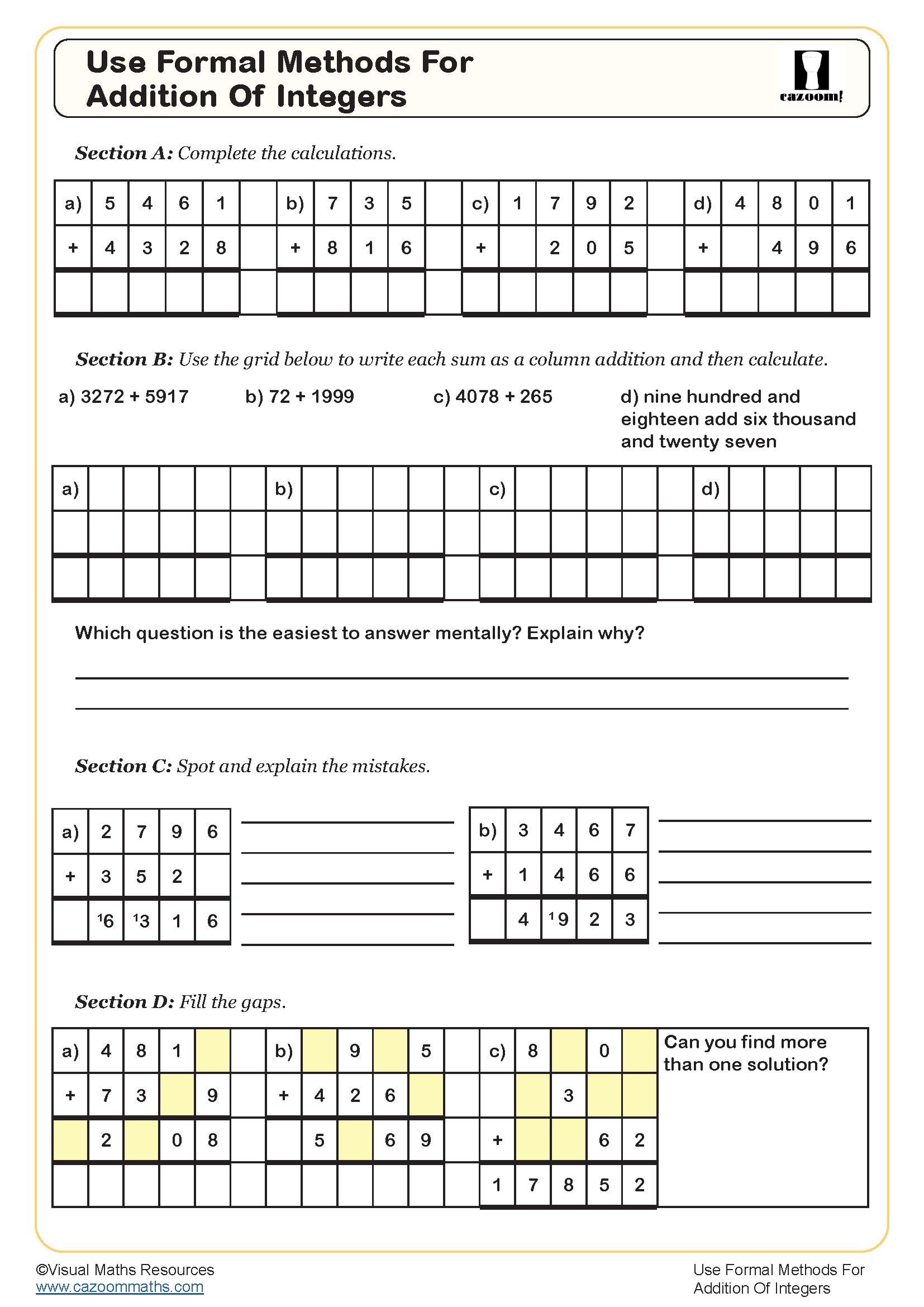
Use Formal Methods For Subtraction of Integers
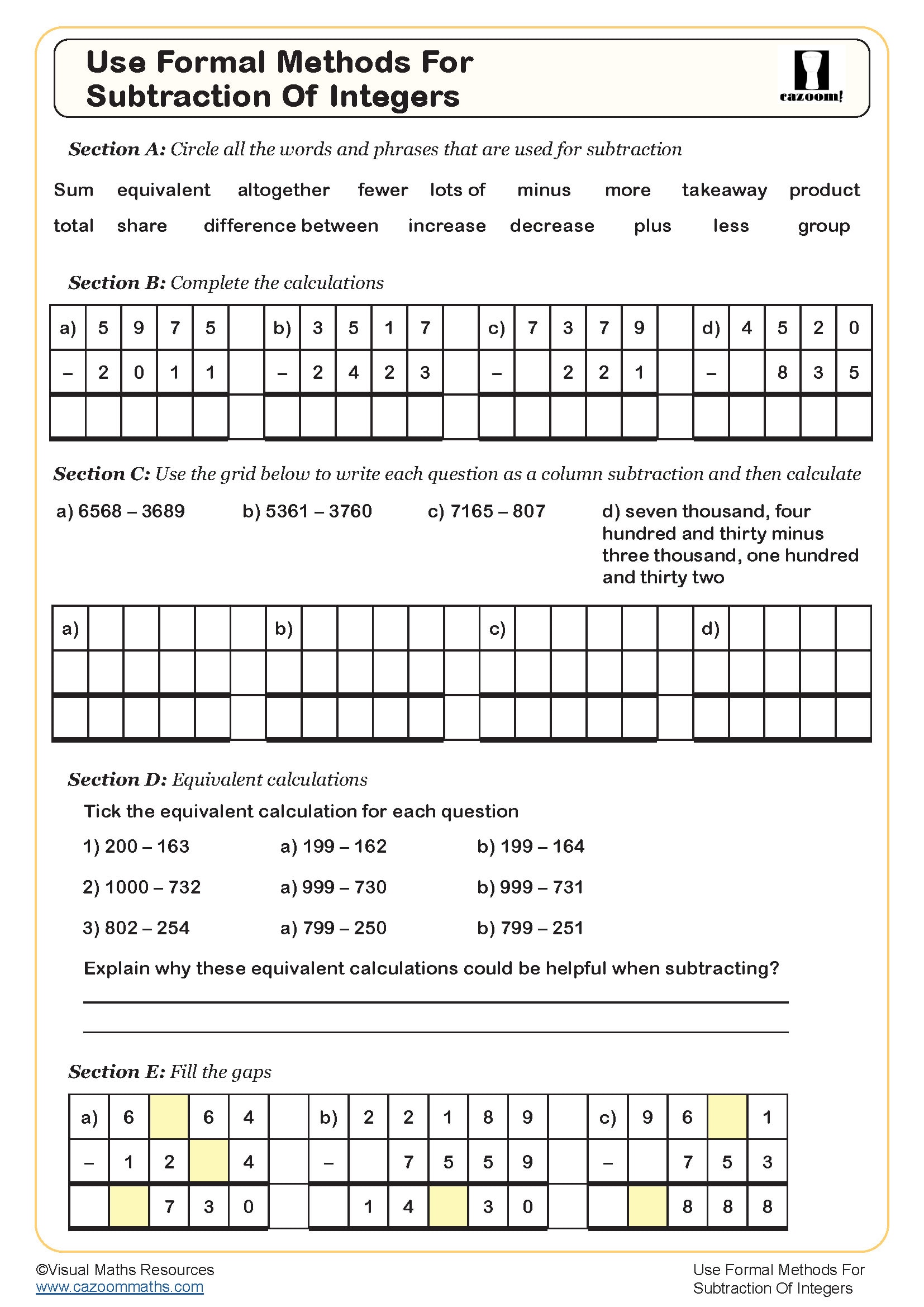
Get Students Excited About Maths With Our Ready-to-print KS3 Written Methods Resources
Written methods provide the structural framework that allows Year 8 students to tackle increasingly sophisticated problems systematically. When calculations exceed mental arithmetic capacity, these formal algorithms become indispensable tools for managing multi-digit operations and decimal calculations. The physical act of writing each step creates a permanent record that students can review, helping them identify patterns and self-correct errors. This methodical approach reduces cognitive load, freeing mental capacity for problem-solving rather than computation. Regular practice with written methods also develops mathematical communication skills, as students learn to present their work in ways others can follow and verify.
Specific learning benefits include:
• Master column addition with decimals and large numbers
• Develops systematic long division techniques
• Strengthens multiplication grid and column methods
• Builds multi-step calculation strategies
• Creates organised mathematical thinking habits
• Improves error detection through checking procedures
• Reinforces place value understanding through practice
From Addition to Advanced Operations: Year 8 Worksheet Topics and Skills Your Pupils Will Learn
Our worksheets progress naturally from concrete number work through pictorial representations to abstract problem-solving, ensuring every student can access the content at their current level. Each resource includes fully worked solutions that demonstrate efficient methods alongside common alternative approaches. The collection spans fundamental techniques through to complex multi-operation problems, providing comprehensive coverage of Year 8 curriculum requirements whilst introducing methods that extend into GCSE territory.
The worksheets in this collection include:
• Addition Written Methods — builds vertical alignment skills from integers through to complex decimal calculations
• Subtraction Written Methods — develops decomposition strategies and borrowing techniques across varied contexts
• Multiplication Written Methods — progresses from grid method foundations to efficient column multiplication algorithms
• Division Written Methods — introduces short division before advancing to long division with remainders
• Mixed Operations — combines all four operations using BIDMAS rules and real-world problem solving
Confused About Written Methods? Our Year 8 Number Activities Will Clear Your Doubts
These worksheets address the practical realities of mixed-ability Year 8 classrooms by offering multiple entry points within each topic area. The standardised format of all resources enables teachers to save instructional time, which they can then use for mathematical discussions instead of explaining worksheet organisation. The method of visual scaffolding helps students who need support, while extension questions serve to challenge advanced learners, thus creating built-in differentiation that eliminates the need for different worksheet versions. The assessment process becomes educational through Answer sheets, which contain both typical student errors and grading instructions. The procedural fluency of Cazoom Maths worksheets helps students learn mathematical concepts through direct application of algorithms while developing their understanding of underlying mathematical principles.
Applying Written Calculation Skills Beyond the Classroom
Mathematical precision through written methods forms the backbone of numerous professional fields and everyday situations. These systematic approaches prevent costly errors in real-world calculations where estimation proves insufficient.
• Planning home improvement projects requiring precise measurements and material calculations
• Managing household budgets with detailed income and expenditure tracking
• Calculating sports statistics and performance improvements over time
• Following recipes that need ingredient scaling for different serving sizes
• Understanding loan repayments and compound interest calculations
• Programming computers where algorithmic thinking mirrors the written method structures
• Engineering and construction work demands exact specifications
• Scientific experiments require accurate data recording and analysis